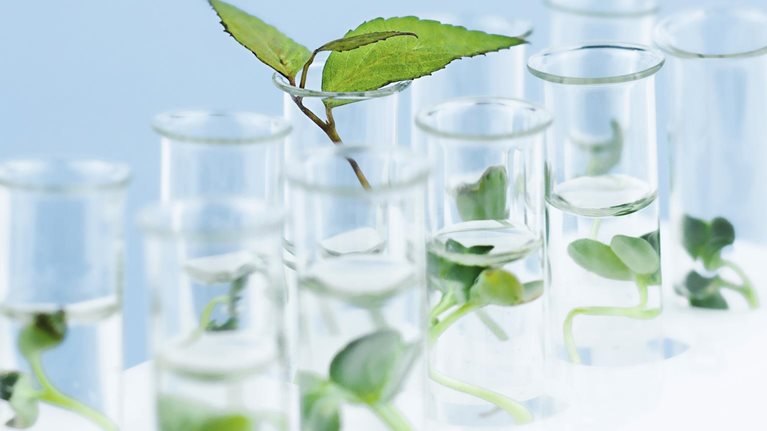As industries continue to shift away from fossil fuels and toward sustainability, many consumer-packaged-goods (CPG) companies have pledged to sell goods that have less impact on the environment. These pledges affect a large portion of the plastic products people use or encounter in everyday life, including packaging materials such as bottles, caps, meal trays, and flexible film wrap. As a result, the demand for circular polymers is rapidly increasing—but capacity announcements are not on pace with demand growth.1
Advanced recycling offers one potential solution. This term refers to recent technological developments meant to complement mechanical recycling—which has generally been the default approach to recycling for the past 30 years. Mechanical recycling is most effective with high-quality, relatively clean sorted waste; it faces structural limitations such as limited pools of appropriate feedstock and resulting material properties that limit end-market applications.
Advanced recycling can not only expand the types of plastics that are recyclable but also produce plastics that have tailored molecular weight distributions and comonomers that are suited for high-value applications, such as flexible packaging for food. However, capacity is limited today; many of these technologies are still developing and scaling.
Given the still-limited scale and uncertain financial returns, advanced recycling is a work in progress. This article addresses the current state of affairs as well as how to mature advanced-recycling technologies, building out infrastructure and sortation, and setting up end-to-end partnerships.
Accelerating demand for recycled plastics
Demand for recycled polymers is growing, primarily because of increased consumer awareness, CPG pledges, and regulations (Exhibit 1). These plastics can be produced through either mechanical recycling or advanced recycling. In mechanical recycling, plastic waste is washed, shredded, and pelletized, while in advanced recycling there is a chemical change and a longer route to go from plastic waste to ready-to-use plastic.

Recycled plastics are gathering steam: more than 80 global CPG, packaging, and retail companies have made public commitments to reach recycled content in their packaging between 15 to 50 percent by 2025.
Europe leads the way in sustainability-related regulation, with fines imposed on nonrecycled-plastic packaging and a single-use plastics ban on ten items. Australia, Japan, and South Korea have set recycling targets for 2025 or 2030. And in North America, legislation in the United States varies by state, with Canada slightly ahead in terms of overall recycling requirements.
The potential of advanced recycling
As of today, mechanically recycled materials are the highest-by-volume nonfossil plastics, followed by bio-based or biodegradable plastics. Mechanical processes are successful in effectively recovering the materials from polyethylene terephthalate (PET) and polyethylene (PE) bottles, which can be used to make recycled beverage containers (bottle-to-bottle recycling). These techniques are also applied to products as diverse as agricultural films, tubs, and bowls.
That said, using recycled plastics in food-grade materials is particularly challenging because of safety concerns around contaminants. Advanced recycling offers a way to solve this challenge by converting recycled material back into hydrocarbons and precursors that other processes can use as chemical feedstocks. Advanced recycling—which includes technologies such as pyrolysis, gasification, solvolysis, and microwave—offers a complementary way to expand the recycling landscape. As a result, it will likely play an increasingly important role in achieving circular-economy targets and commitments and help to expand the amounts, types, and qualities of plastic waste that can be recycled (Exhibit 2). Although mechanical-recycling rates are high for rigid polyethylene (PE) and rigid PET resin, certain advanced-recycling technologies can accept a range of polymers, including mixed plastics with potentially greater contamination.

Advanced recycling also has sustainability benefits. For example, it uses waste rather than fossil fuels for polymer production, and it diverts plastic waste from landfills and incineration. With landfills nearing capacity in some regions and incineration prompting concerns about carbon emissions, advanced recycling offers an alternative.
Must-win battles for advanced recycling
If the current sustainability momentum were to continue at pace and if the constraints were resolved,2 we anticipate that advanced recycling would continue to grow and play a crucial role in meeting the demand for recycled polymers. In such a scenario, advanced recycling could satisfy 4 to 8 percent of total polymer demand by 2030 and would require the deployment of more than $40 billion in capital investment over the next decade (Exhibit 3). Although that may seem like a small portion of the total market for plastics, it demonstrates significant growth over today’s near-zero percent. Moreover, the technology has the potential for more than 20 percent year-over-year growth through 2030.

Currently at limited scale, advanced recycling requires further development of key technologies and waste collection as well as new partnerships or investments. To meet demand, advanced-recycling technology needs to be improved, infrastructure needs to be more widespread and effective, and partnerships need to be scaled across the value chain.
Maturing advanced-recycling technologies toward scale and reliability
Dozens of companies are developing technology to make these plans possible. As companies adopt these technologies, they will no doubt face learning curves. And as each technology matures, its yield, efficiency, and reliability will improve, leading to higher throughput and lower operational cost. Scale-up of these technologies also means lower capital cost per metric ton and lower fixed costs for labor, maintenance, and overhead. That said, few companies currently have large-scale commercial plants. Many are in the early stages of commercialization (with production of less than 20,000 metric tons of advanced-recycled plastics per year), and a limited scale can result in high capital cost per unit (with a relatively high capital intensity of more than $3,000 per metric ton) as well as fixed costs.
For some advanced-recycling technologies, the optimization of output quality, quantity, and process efficiency depends on feedstock consistency. For instance, presorting mixed plastic waste is sometimes required to remove PET and polyvinyl chloride (PVC) prior to pyrolysis, which produce byproducts that can cause problems with equipment. For other processes, such as gasification, this is less of a concern. Furthermore, transporting, storing, and potentially upgrading intermediates can add significant operational and capital costs.3 These are increasingly offset by green premiums, but economics still depend on the optimization of processes and site location—for example, the trade-off between waste proximity and the location of further chemical processing.
Building out infrastructure and sortation to ensure feedstock availability
Today, increasing the plastic feedstock supply requires the buildout of infrastructure and sortation, yet access to low-cost feedstock is limited by the logistics around waste collection and transportation costs. For example, flexible plastic–packaging waste has a lower recovery rate compared with rigid-packaging waste in some regions because the former may not be accepted in recycling programs, is difficult to sort, and is often contaminated (Exhibit 4).

For these reasons, among others, new programs should help to improve the collection of plastic waste, particularly around flexibles, multilayers, and pouches. Some programs have been introduced to improve sortation for flexible plastics and enhance recovery rates, including pilot programs for enhanced optical sortation in material recovery facilities (MRFs) and alternative collection programs, such as secondary bagging.
Scaling these programs, however, entails significant changes in consumer behavior, and investment in waste collection and MRF upgrades. Material densification, which compresses loose plastics into waste bales of uniform size and shape, can help offset high transportation costs. Other routes to help scale supply require changes in collection processes and consumer participation to expand the supply of plastic waste, improved feedstock management via digital solutions to ensure consistent input and output quality, and technological advances in sortation to improve recovery rate.
Setting up end-to-end partnerships to achieve at-scale investment
Coordination across the value chain between technology providers, resin producers, waste-management companies, and CPGs could serve to expand the supply of feedstock and the demand for recycled materials (Exhibit 5). Over the past year, there have been partnership announcements centered in Europe and the United States, but investment lags in part due to the uncertainties of the long-term economics. Sustained green premiums,4 linked to strong CPG demand for recycled polymers, are supportive of economic returns for advanced-recycling projects.

Cross–value chain partnerships, such as MRF supply agreements and secured offtake contracts, could also strengthen advanced recycling’s development trajectory. The combination of sustained green premiums, technology scaling, and value chain partnerships could further encourage investment.
On this point, technology developers have announced more than 20 advanced-recycling projects in the past few years, often in partnership with petrochemical players. Overall, these announced projects could reach up to one million metric tons per year of capacity by 2024. Although a majority are small scale, with only a few large projects expected to create capacity of more than 50 thousand metric tons per year, some players have set ambitious targets, committing more than ten million metric tons per year by 2030.
Recent climate pledges and commitments from CPG companies underscore the urgent need to take action around advanced recycling to deliver on consumer expectations. In the years to come, increased use of advanced-recycling technologies could be a win–win for companies that can consistently provide recycled materials and for consumers who are motivated to buy these products. Ultimately, these technologies can benefit the environment and improve the viability of the plastics recycling value chain.


